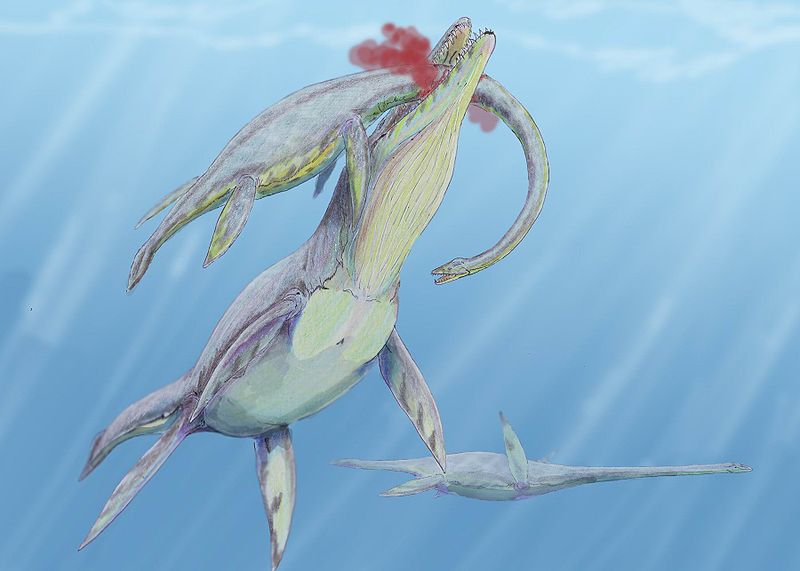
Adaptation
Kronosaurus adapted almost perfectly for its marine ecosystem.
Like other plesiosaurs it had a streamlined torpedo
shaped body that was propelled through the water by two sets of
flippers, making them among the fastest swimming creatures that
ever existed (Renneboog, 2011). However
Kronosaurus had a
robust trait that stands out from many other Plesiosaurs.
However, unlike its relative Plesiosaurs,
Kronosaurus had shorter necks with fewer cervical
vertebrae and
had a massive head.
The similarities of its skull and that of a crocodiles have been
examined for years.
Their short necks served as support structures
for their oversized head and jaw, but its massive size made
Kronosaurus less maneuverable.
 Kronosaurus’
upper jaw consisted of twenty-five percent of its length
(McHenry, 2009). These massive jaws were armed with
tirangular, dagger-shaped teeth (Renneboog, 2011).
Kronosaurus had an astounding bite force of 33,000 psi,
which is more than six times as much as the modern day
crocodile!
Here is an
example of what one-sixth of Kronosaurus' bite force is capable
of! Its powerful jaws allowed it to crush the shells
and consume even the largest turtles of its period (McHenry,
2009). The head also flowed smoothly into the rest of the
body allowing for minimum resistance and maximum speeds in the
water (McHenry, 2009). Its ability to swim at high
speeds allowed it to hunt even the fastest prey and escape the
larger predators.
Kronosaurus’
upper jaw consisted of twenty-five percent of its length
(McHenry, 2009). These massive jaws were armed with
tirangular, dagger-shaped teeth (Renneboog, 2011).
Kronosaurus had an astounding bite force of 33,000 psi,
which is more than six times as much as the modern day
crocodile!
Here is an
example of what one-sixth of Kronosaurus' bite force is capable
of! Its powerful jaws allowed it to crush the shells
and consume even the largest turtles of its period (McHenry,
2009). The head also flowed smoothly into the rest of the
body allowing for minimum resistance and maximum speeds in the
water (McHenry, 2009). Its ability to swim at high
speeds allowed it to hunt even the fastest prey and escape the
larger predators.